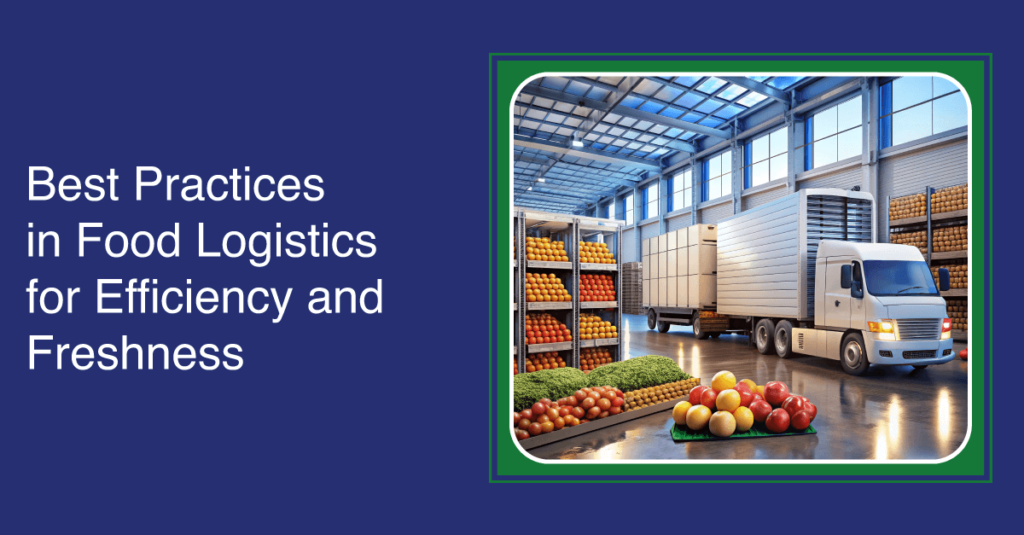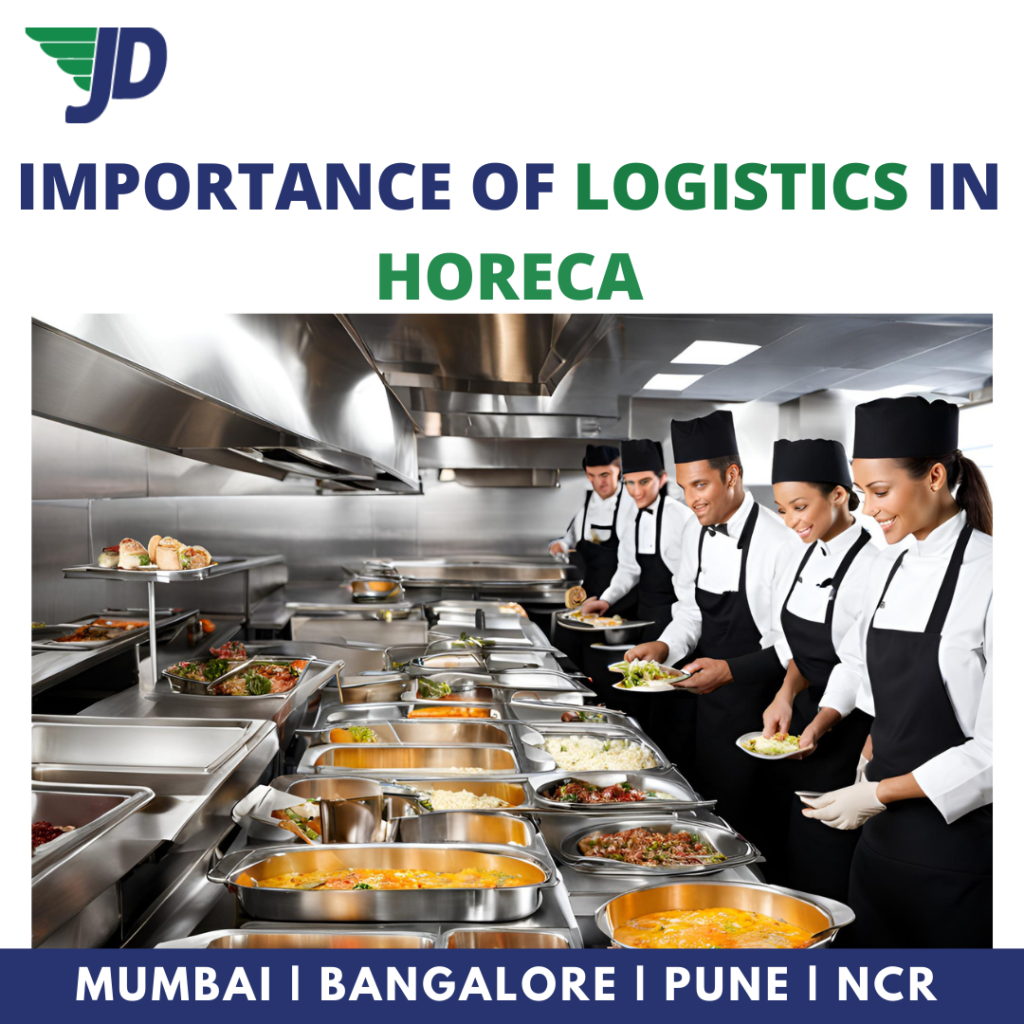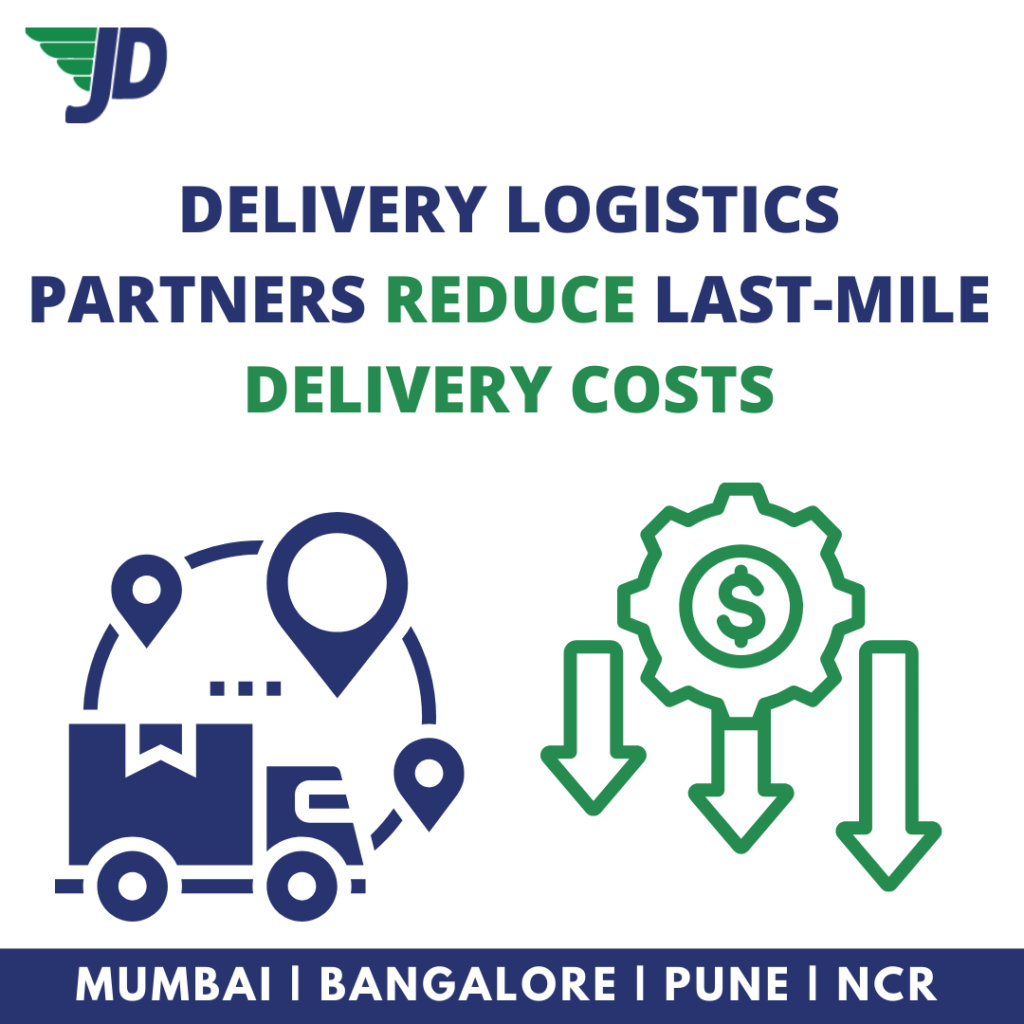When it comes to food logistics, ensuring both delivery efficiency and food freshness is a balancing act that requires more than basic supply chain knowledge. It depends upon a well-coordinated system to balance consumer demand with the pressing need to preserve perishable goods. The journey of food from the farm to the table becomes more than a speedy movement; it involves temperature control, packaging, inventory management, and transport. With the rising emphasis on food safety and sustainability, businesses must adopt practices that streamline operations, minimise waste, and maintain product integrity.
In this blog, we will understand different practices that are changing food logistics and ensuring that the freshness of the products is not compromised. Let’s get started!
A] What is Food Logistics
Food logistics encompasses the preliminary planning, execution, and monitoring of material flow and storage for food products. It covers the journey from producers to final consumers, creating processes and strategies for shipping food and food ingredients.
Unlike other transportation for non-food products, food logistics requires more attention and consideration, such as food safety and shipping perishable items that require quick shipment. It is crucial to ensure food products are safe, of good quality, and well-positioned in the market at the right time.
Looking for B2B Last-Mile Delivery Services?
Partner with Us for Seamless B2B Last-Mile Delivery from Warehouse to Retailer
B] Nine Best Practices in Food Logistics
1. Temperature Control
Maintaining the correct temperature throughout the food transportation process is necessary to preserve freshness. Products like dairy, meat, and produce must be kept to specific temperatures to prevent spoilage. Food cold chain logistics use refrigerated trucks and warehouses to maintain these conditions throughout the supply chain process without compromising the quality. JustDeliveries offers temperature-controlled transportation to ensure that your perishables are delivered fresh and meet both customer expectations and regulatory standards.
2. Choose the Right Transportation
The selection of a suitable food and beverage transportation is one of the most vital logistics decisions. Perishables require speed yet temperature control, so refrigerated trucks or other cold-chain vehicles would be the best choice. However, transportation options may differ for non-perishable goods depending on the distance and product. Partnering with a 3PL food logistics provider like JustDeliveries can help optimise your transportation needs that deliver on time with the lowest possible cost. You can choose the type of vehicle to avoid overhead expenses, streamline your supply chain, and keep the products fresh for your consumers.
3. Route Optimisation
Time is important in food supply chain management, especially when you are dealing with perishable goods. Routing should be efficient to ensure timely deliveries, reduce fuel consumption, and deliver products to their destination in top condition. Route optimisation software can help determine the most effective delivery path, avoiding traffic, weather disruptions, or unexpected delays. As a business, optimising routes would ensure the freshness of products to your consumers while also lowering operational costs and reducing the carbon footprint of their logistics operations.
4. Hygiene and Sanitation
Food safety is important in food transportation, and maintaining hygiene standards throughout logistics is non-negotiable. Strict protocols should be in place to ensure the cleanliness of transport vehicles and warehouse sanitation. Regularly scheduled cleaning, proper handling procedures, and following the correct safety regulations also prevent contamination and ensure that products are safe for consumption. Implementing strict hygiene standards at every point of contact in the supply chain can protect consumers while at the same time giving your brand credibility and adherence to food safety regulations.
5. Inventory Management
Proper stock management will prevent overordering of stock or stockout, which could lead to product wastage or a shortage in supply. A good advanced stock management system will enable an organisation to keep track of the real-time stock levels and demand better. Most perishable items must be managed through a “first in, first out” type of inventory to reduce spoilage. Effective inventory management ensures you have the right products in stock at the right time, contributing to efficiency and freshness in the food logistics chain.
6. Proper Storage Conditions
Another very important aspect of food cold chain logistics is maintaining proper storage conditions. Temperature-controlled warehouses must be equipped with various products with separate storage requirements. Along with that, the other factors that affect the perishable goods include humidity, air circulation, and ventilation. Storage facilities must be regularly inspected and maintained so conditions do not change. Investments in proper storage solutions ensure that perishable items will remain fresh for longer periods, thus reducing waste and maximising shelf life.
7. Regulatory Compliances
Regulatory navigation is a must in managing food supply chain activities. In this regard, food logistics companies must comply with several safety standards. For instance, companies in India must be compliant with the FSSAI (Food Safety and Standards Authority of India). This safety compliance will decrease the possibility of food contamination and ensure that products pass all required safety standards. Thus, hiring reliable logistics companies must ensure that your products reach your consumers in the same condition they left the storage facilities.
8. Data Analytics
Data analytics do wonders in the logistics optimisation of food delivery. Trends and patterns can be studied to forecast demand, manage delivery schedules, and optimise operations. However, through insights into data, logistics managers make informed decisions on stocking, shipping, and transportation so that every step of the supply chain functions efficiently. Predictive analytics also helps businesses anticipate changes in demand, reduce waste, and enhance freshness overall. Data analytics gives companies the power to play an even more active role in managing their logistics. JustDeliveries offers access to the dashboard to track the vehicle’s temperature and gain valuable insights.
9. IoT Technology
Food and beverage transportation is transformed using IoT technologies, especially in real-time shipment monitoring. IoT devices can track product location, temperatures, and humidity levels and help transport the products in the same condition. Real-time monitoring of temperature in the transportation of foods, especially foods with a short shelf life, is important since adjustments can be made immediately to improve product quality. More importantly, this helps logistics managers understand how the products are handled throughout the supply chain. The adoption of smart dashboards ensures that logistic teams monitor multiple variables in real time and make the necessary decisions and interventions to guarantee the best conditions for freshness and efficiency.
Need Smarter Logistics for Perishable Foods?
Get Expert Assistance to Optimize Logistics for Fresher Deliveries
Conclusion
Implementing the best practices in food logistics is important to maintain efficiency and preserve the freshness of perishable goods. By focusing on the above-mentioned areas businesses can ensure that their food supply chains operate seamlessly. These practices will help reduce waste but also improve customer satisfaction by delivering products in optimal condition.
If you are looking for a reliable partner to streamline your food cold chain logistics and ensure perishable goods reach their destination in optimal condition, contact JustDeliveries now! With our advanced technology and expertise in frozen food transportation, we help you deliver fresh products every time!

Mansi Mahansaria
I’m Mansi Mahansaria, CEO and Founder of JustDeliveries, a B2B logistics company specializing in the food and beverage sector. With a background in Chemical Technology (ICT Mumbai), an MBA (FMS Delhi), and experience at IDFC Private Equity and Tata Group, I’ve built a plug-and-play logistics network helping F&B brands scale efficiently. I also share insights on entrepreneurship and logistics at industry and academic events.






